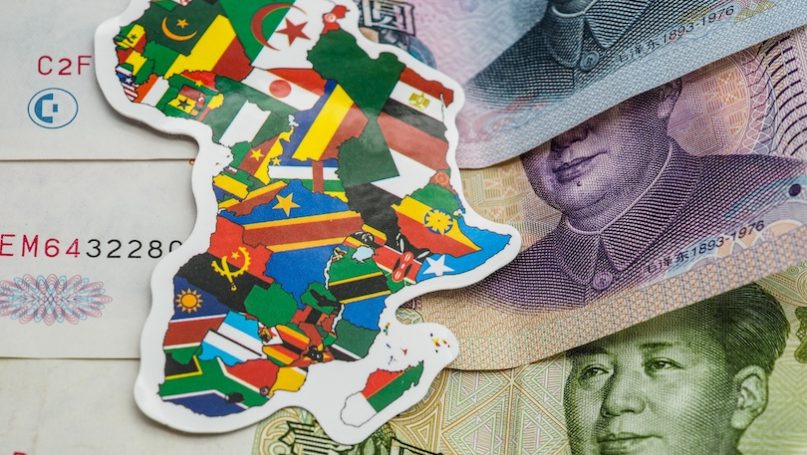
This case study is an excerpt from McGlinchey, Stephen. 2022. Foundations of International Relations (London: Bloomsbury).
Throughout this chapter, we have discussed the way some poorer states have not been able to break cycles of poverty. One glaring exception is China. As China shifted to a market economy in the late 1970s, the vast majority of Chinese citizens were living in poverty, having borne the brunt of Mao Zedong’s failed communist economic policies. Today, that figure stands below 1 per cent. China has thus become a global economic superpower, while at the same time retaining dimensions of a developing state due to the speed of its transformation. For example, while it has annual gross domestic product of US$14.3 trillion dollars (2019), second only to the United States, it falls below the World Bank threshold for gross national income (GNI) per capita to qualify as ‘developed’ as its new wealth has not (yet) dispersed amongst its population to the extent seen in developed states.
To illustrate the growing power and influence of China, we can examine two images of China’s Belt and Road Initiative. Driven by Chinese labour and financed through Chinese government loans, the size of the project is vast.
The first image is to view the Initiative as one that overturns established development patterns. This is China’s preferred image – promising that the benefits will be shared, a win-win for those participating. The initial focus on infrastructure does mean that in the short term, little will be done to directly address poverty – but in the longer term, the benefits will be many. These can already be seen emerging. For example, in Ethiopia, the 70 per cent Chinese-funded Addis Ababa–Djibouti Railway began construction in 2011. China argued it would improve the internal productivity of the state and yield longer term economic benefits that will help alleviate poverty (pictured are Chinese construction workers and Ethiopian staff celebrating the arrival of the first commercial train in 2018).
Habib and Faulkner (2017) note that many partner states appreciate the minimal political conditions that come with Chinese finance and do not replicate the North-South, top-down, conditionality-focused aid. Hence, they are more able to access opportunities, such as the Chinese investments, and use those to develop their societies further. Indeed, the remarkable experience of China in reducing its own poverty levels are a testament to its record and expertise on the issue. But, there still remain many questions over whether the aid, loans and investment laid on as part of China’s Belt and Road Initiative will result in similar problems to that of traditional donor states. Loans have to be repaid and concerns have been raised whether recipients will face debts that will again place them in spirals of poverty.
This critique gets us to the second image, which draws on lessons learned from historical experiences of development and the lines of thinking these have established amongst politicians and scholars. This is best located in a 2019 World Bank Report that assessed the benefits and risks to 70 states along land and maritime corridors that connect Asia, Europe, and Africa that will be affected by China’s ambitions. It reported that the programme’s success when measured at the human level depends on the implementation of policy measures focused on three broad categories: transparency, country-specific gaps, and multilateral cooperation. In other words, it expresses a desire for China to add conditionality to its dealings with third party states. In addition, the World Bank argues that many states need to strengthen environmental standards, adopt social safety nets, and improve labour conditions – things that the Chinese government do not typically insist on. Such conditionalities would prove beneficial in the long term and ensure the programme is an economic as well as a poverty reduction success whilst not repeating the same mistakes of development projects of the past.
The report proposes a series of policy recommendations to help developing countries maximise benefits and mitigate risks of partaking in China’s plans. It is estimated that China’s programme could boost global trade by up to 6.2 per cent and Global income could increase by as much 2.9 per cent. However, in order for these statistics to be realised the World Bank asserted that complementary policy reforms are essential for the third-party states in question to unlock the potential gains of the Chinese initiative. In addition, stronger labour-mobility and protection would ensure gains are more equally shared. The analysis by the World Bank also found that the programme has some significant risks that will be exacerbated by a lack of transparency and weak government institutions in participating economies – opening the way for corruption and the direction of funds to the benefit of few, repeating an age-old tale. The World Bank report may not be welcomed as it can be interpreted as seeking to add the conditionalities of past aid – the very ones that have been heavily criticised earlier in the chapter. The difference is, however, that the World Bank argues both the donor (China) and the recipient states must focus on such reforms, moderating some of the power relationships.
Building further on this second image, some evidence is emerging that the Belt and Road Initiative more reflects the kind of one-way, or exploitative, trade relationships that were outlined earlier in the chapter. For example, since a highway linking Pakistan to China was completed, Pakistani exports to China have fallen while imports have increased (Ridgwell 2017). Examples like this are causing concerns that China’s ‘new Silk Road’ will not lead the to the benefits promised and that developing states must avoid the risk of once again being exploited, though this time by a rising China with hegemonic ambitions.